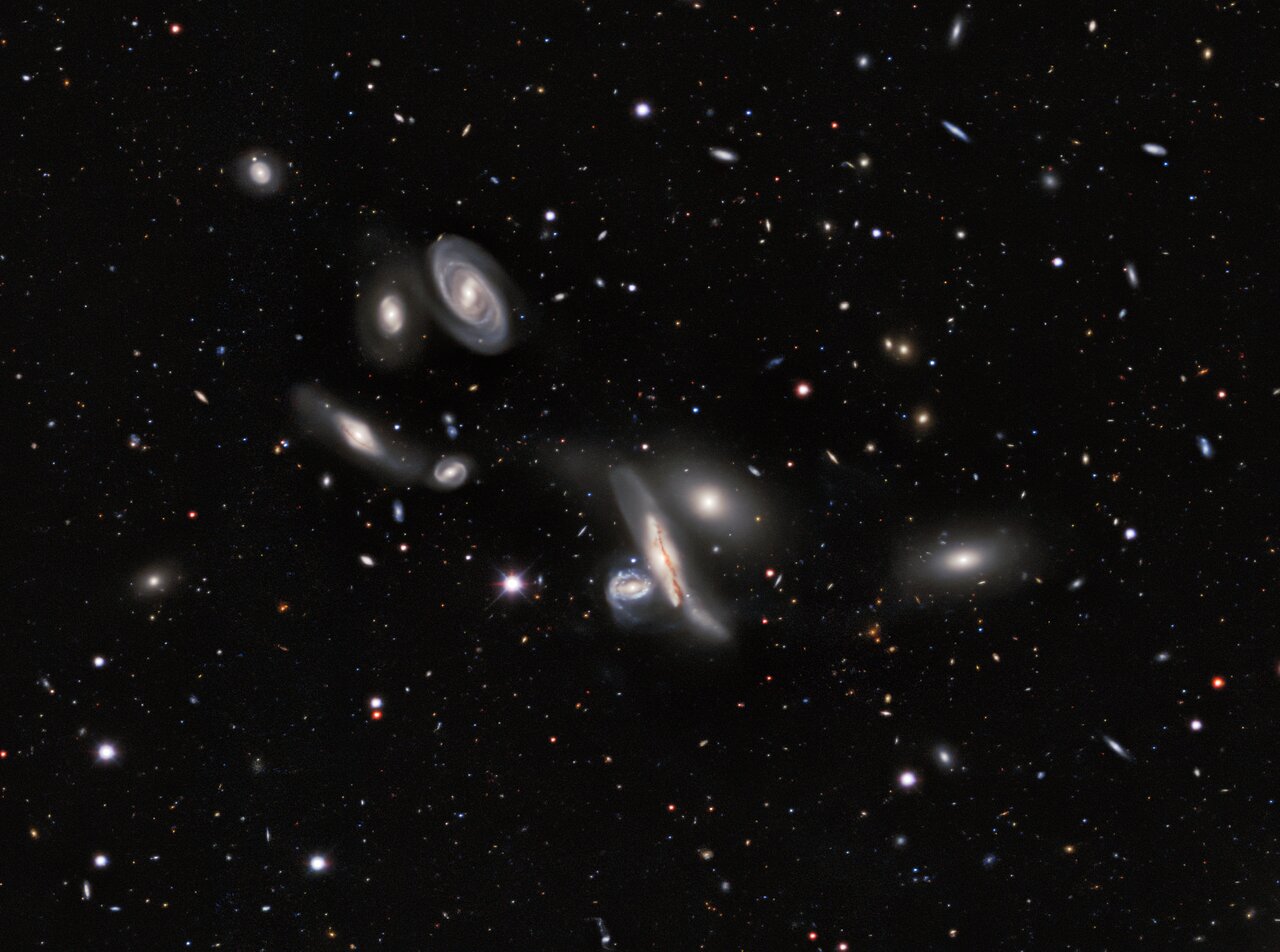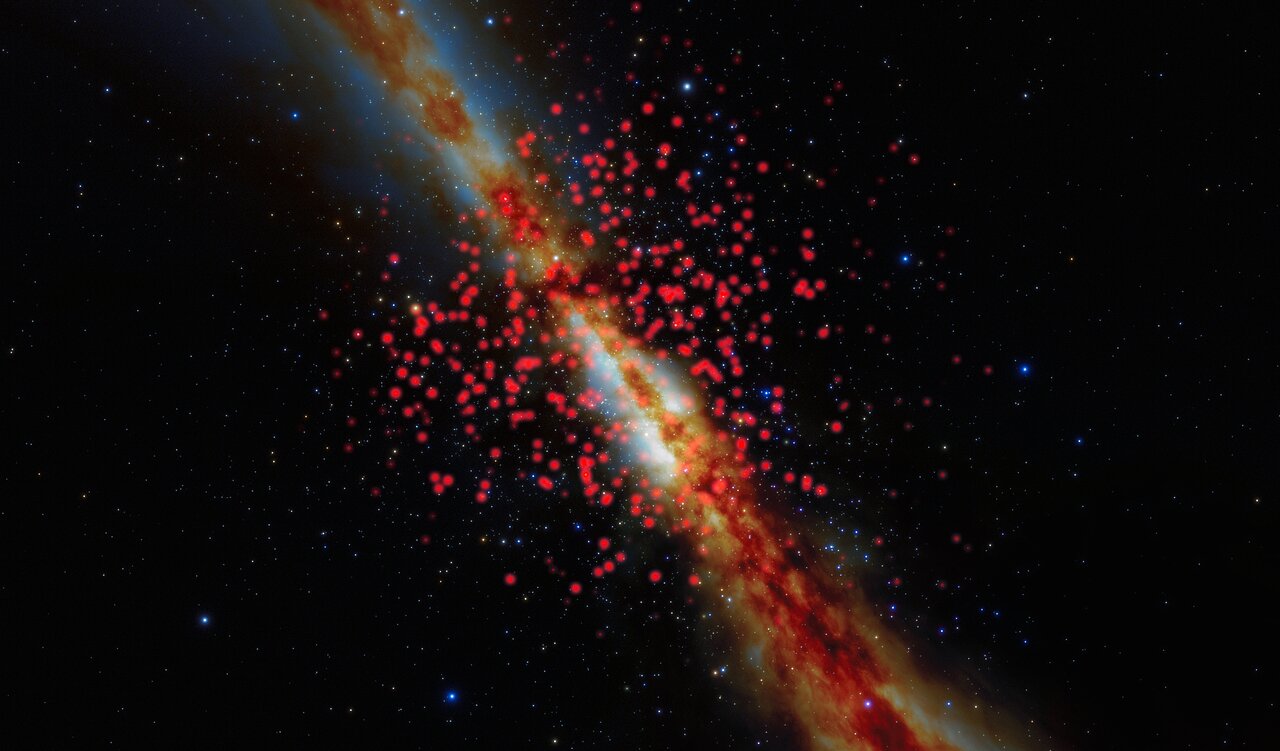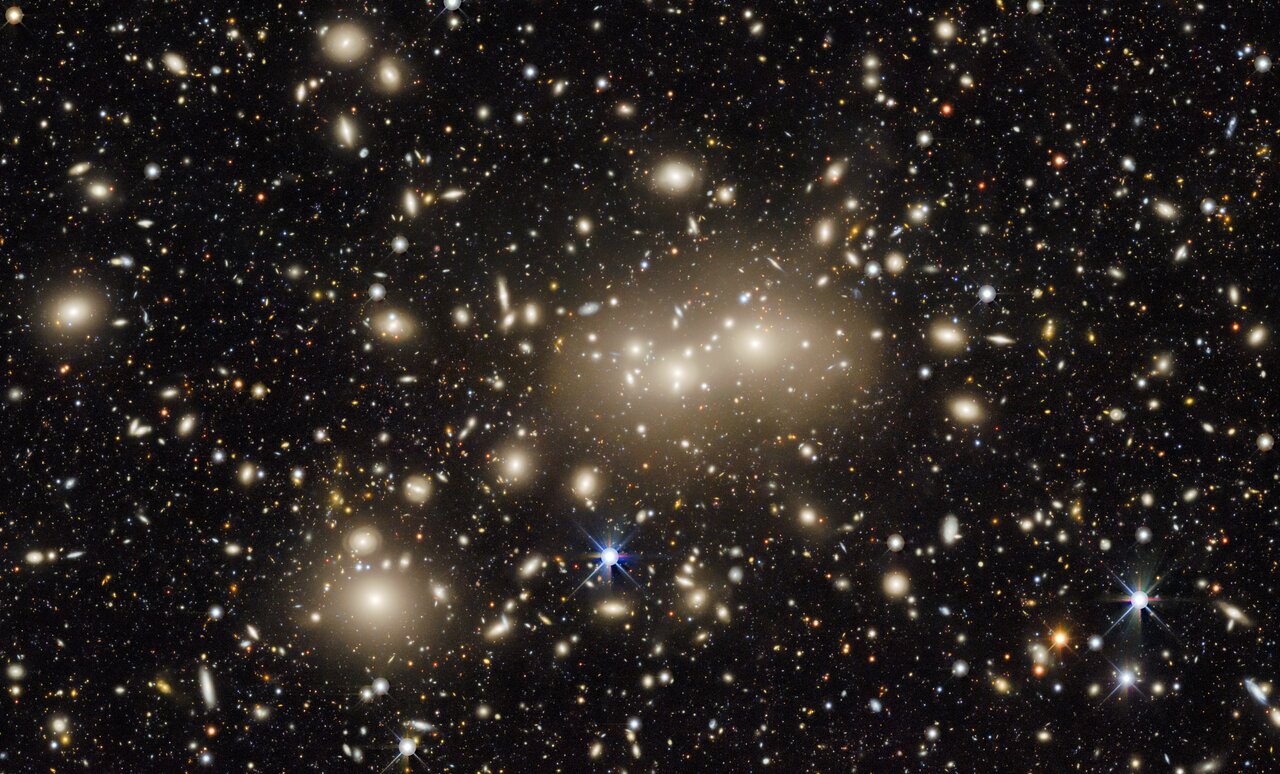Find out the latest thinking about our universe.
-
bystander
- Apathetic Retiree
- Posts: 21577
- Joined: Mon Aug 28, 2006 2:06 pm
- Location: Oklahoma
Post
by bystander » Tue Jan 26, 2021 4:08 pm
Giant Map of the Sky Sets Stage for Ambitious DESI Survey
NSF | NOIRLab | DESI | 2021 Jan 13
Final data release from DESI Legacy Imaging Surveys issued
Astronomers using images from Kitt Peak National Observatory (KPNO) and Cerro Tololo Inter-American Observatory (CTIO) have created the largest ever map of the sky, comprising over a billion galaxies. The ninth and final data release from the ambitious DESI Legacy Imaging Surveys sets the stage for a ground-breaking 5-year survey with the Dark Energy Spectroscopic Instrument (DESI), which aims to provide new insights into the nature of dark energy. ...
For millennia humans have used maps to understand and navigate our world and put ourselves in context: we rely on maps to show us where we are, where we came from, and where we’re going. Astronomical maps continue this tradition on a vast scale. They locate us within the cosmos and tell the story of the history and fate of the Universe: it will expand forever, the expansion currently accelerating because of an unknown quantity called dark energy. Astronomical maps may help explain what this dark energy is and why it exists.
Capitalizing on that possibility requires an unprecedented map — one that charts faint galaxies more uniformly and over a larger area of sky than ever before. To meet that challenge, astronomers have now created a
new two-dimensional map of the sky that is the largest ever made in terms of sky coverage, sensitivity, and the total number of galaxies mapped. ...
Building a Giant 2D Map of the Universe
to Prepare for the Largest 3D Map
Lawrence Berkeley National Laboratory | 2021 Jan 13
Know the quiet place within your heart and touch the rainbow of possibility; be
alive to the gentle breeze of communication, and please stop being such a jerk. — Garrison Keillor
-
bystander
- Apathetic Retiree
- Posts: 21577
- Joined: Mon Aug 28, 2006 2:06 pm
- Location: Oklahoma
Post
by bystander » Tue Jan 26, 2021 5:06 pm
Doubling the Number of Known Gravitational Lenses
NSF | NOIRLab | DESI | 2021 Jan 13
Machine learning key to discovery of over 1200 gravitational lenses
Data from the DESI (Dark Energy Spectroscopic Instrument) Legacy Imaging Surveys have revealed over 1200 new gravitational lenses, approximately doubling the number of known lenses. Discovered using machine learning trained on real data, these warped and stretched images of distant galaxies provide astronomers with a flood of new targets with which to measure fundamental properties of the Universe such as the Hubble constant, which describes the expanding Universe.
Astronomers hunting for
gravitational lenses utilized machine learning to inspect the vast dataset known as the
DESI Legacy Imaging Surveys, uncovering 1210 new lenses. The data were collected at Cerro Tololo Inter-American Observatory (
CTIO) and Kitt Peak National Observatory (
KPNO), both Programs of the National Science Foundation’s NOIRLab. The ambitious
DESI Legacy Imaging Surveys just had its ninth and final data release.
Discussed in scientific journals since the 1930s, gravitational lenses are products of Einstein’s
General Theory of Relativity. The theory says that a massive object, such as a cluster of galaxies, can warp
spacetime. Some scientists, including Einstein, predicted that this warping of spacetime might be observable, as a stretching and distortion of the light from a background galaxy by a foreground cluster of galaxies. The lenses typically appear in images as arcs and streaks around foreground galaxies and galaxy clusters. ...
Discovering New Strong Gravitational Lenses in the DESI Legacy Imaging Surveys ~ X. Huang
et al
Know the quiet place within your heart and touch the rainbow of possibility; be
alive to the gentle breeze of communication, and please stop being such a jerk. — Garrison Keillor
-
bystander
- Apathetic Retiree
- Posts: 21577
- Joined: Mon Aug 28, 2006 2:06 pm
- Location: Oklahoma
Post
by bystander » Tue Jan 26, 2021 5:37 pm
Mapping Our Sun’s Backyard
NSF | NOIRLab | DESI | Backyard Worlds | 2021 Jan 13
Astronomers and citizen scientists produce the most complete 3D map of cool brown dwarfs in the Sun’s neighborhood
Astronomers have curated the most complete list of nearby brown dwarfs to date thanks to discoveries made by thousands of volunteers participating in the Backyard Worlds citizen science project. The list and 3D map of 525 brown dwarfs — including 38 reported for the first time — incorporate observations from a host of astronomical instruments including several NOIRLab facilities. The results confirm that the Sun’s neighborhood appears surprisingly diverse relative to other parts of the Milky Way Galaxy.
Mapping out our own small pocket of the Universe is a time-honored quest within astronomy, and the results announced today have added to this long-running effort by cataloging the locations of more than 500 cool brown dwarfs in the vicinity of the Sun. An international team of astronomers — assisted by the legions of volunteer citizen scientists in the
Backyard Worlds: Planet 9 collaboration — have announced an unprecedented census of 525 cool brown dwarfs within 65 light-years of the Sun, including 38 new discoveries. By determining the distances to all the objects in the census, astronomers have been able to build a 3D map of the distribution of cool brown dwarfs in the Sun’s local neighborhood.
This breakthrough relied on novel datasets published by the
DESI Legacy Imaging Surveys, which blend huge quantities of astronomical data from a variety of sources: archival images from the
Nicholas U. Mayall 4-meter Telescope at Kitt Peak National Observatory (
KPNO) and the
Víctor M. Blanco 4-meter Telescope at Cerro Tololo Inter-American Observatory (
CTIO), which are Programs of NSF’s NOIRLab, plus critical sky maps from NASA's Wide-field Infrared Survey Explorer (
WISE). These powerful survey datasets were combined with new distance measurements from the NASA
Spitzer Space Telescope to create the best three-dimensional map of the Sun’s local neighborhood to date.
Brown dwarfs are sometimes referred to as “failed stars.” They are thought to form the way stars do, but they do not become massive enough to trigger nuclear fusion in their cores. Their faintness and relatively small sizes make them difficult to identify without careful analysis of data from sensitive telescopes — meaning that many have gone undiscovered until now. However, by finding and studying brown dwarfs, astronomers can learn more about star formation and also about planets around other stars. ...
Citizen Scientists Help Create 3D Map of Cosmic Neighborhood
NASA | WISE |
Spitzer | Backyard Worlds | 2021 Jan 13
The Field Substellar Mass Function Based on the Full-sky 20-pc
Census of 525 L, T, and Y Dwarfs ~ J. Davy Kirkpatrick
et al
Know the quiet place within your heart and touch the rainbow of possibility; be
alive to the gentle breeze of communication, and please stop being such a jerk. — Garrison Keillor
-
neufer
- Vacationer at Tralfamadore
- Posts: 18805
- Joined: Mon Jan 21, 2008 1:57 pm
- Location: Alexandria, Virginia
Post
by neufer » Tue Jan 26, 2021 6:54 pm
- Lewis Carroll: The Hunting of the Snark
Fit the Second: THE BELLMAN'S SPEECH
He had bought a large map representing the sea,
Without the least vestige of land:
And the crew were much pleased when they found it to be
A map they could all understand.
"What's the good of Mercator's North Poles and Equators,
Tropics, Zones, and Meridian Lines?"
So the Bellman would cry: and the crew would reply
"They are merely conventional signs!
"Other maps are such shapes, with their islands and capes!
But we've got our brave Captain to thank:
(So the crew would protest) "that he's bought us the best--
A perfect and absolute blank!"
Art Neuendorffer
-
bystander
- Apathetic Retiree
- Posts: 21577
- Joined: Mon Aug 28, 2006 2:06 pm
- Location: Oklahoma
Post
by bystander » Wed Mar 01, 2023 5:07 am
Over One Billion Galaxies Blaze
Bright in Colossal Map of the Sky
NOIRLab | DESI Legacy Imaging Survey (DR10) | 2023 Feb 23
Tenth data release from DESI Legacy Imaging Survey expands largest two-dimensional map of the sky ever created
Data Credit: LoVoCCS/DESI Legacy Imaging Survey/KPNO/NOIRLab/NSF/AURA;
Image processing: T.A. Rector (University of Alaska Anchorage/NSF’s NOIRLab,
Jen Miller, M. Zamani & D. de Martin (NSF’s NOIRLab)
The Universe is teeming with galaxies, each brimming with billions of stars. Though all galaxies shine brightly, many are cloaked in dust while others are so distant that to observers on Earth they appear as little more than faint smudges. By creating comprehensive maps of even the dimmest and most-distant galaxies, astronomers are better able to study the structure of the Universe and unravel the mysterious properties of dark matter and dark energy. The largest such map to date has just grown even larger, with the tenth data release from the DOE’s Lawrence Berkeley National Laboratory's Dark Energy Spectroscopic Instrument (DESI) Legacy Imaging Survey.
The DESI Legacy Imaging Survey expands on the data included in two earlier companion surveys: the Dark Energy Camera (DECam) Legacy Survey and the Beijing-Arizona Sky Survey. Jointly these three surveys imaged 14,000 square degrees of the sky visible from the northern hemisphere using telescopes at NSF’s NOIRLab’s Kitt Peak National Observatory (KPNO) and Cerro Tololo Inter-American Observatory (CTIO) in Chile. ...
Know the quiet place within your heart and touch the rainbow of possibility; be
alive to the gentle breeze of communication, and please stop being such a jerk. — Garrison Keillor



